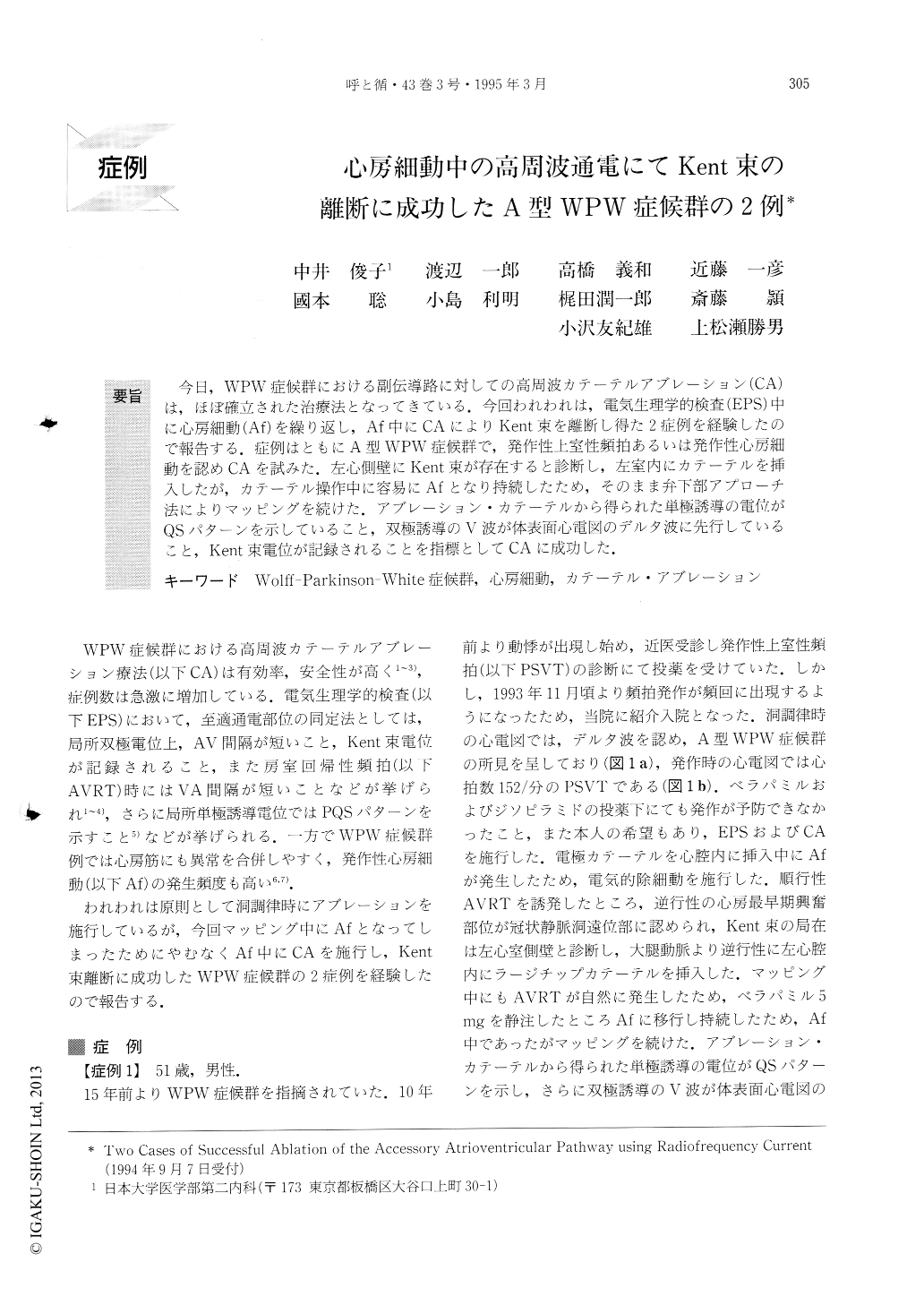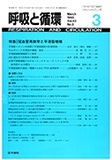Japanese
English
- 有料閲覧
- Abstract 文献概要
- 1ページ目 Look Inside
今日,WPW症候群における副伝導路に対しての高周波カテーテルアブレーション(CA)は,ほぼ確立された治療法となってきている.今回われわれは,電気生理学的検査(EPS)中に心房細動(Af)を繰り返し,Af中にCAによりKent束を離断し得た2症例を経験したので報告する.症例はともにA型WPW症候群で,発作性上室性頻拍あるいは発作性心房細動を認めCAを試みた.左心側壁にKent束が存在すると診断し,左室内にカテーテルを挿入したが,カテーテル操作中に容易にAfとなり持続したため,そのまま弁下部アプローチ法によりマッピングを続けた.アブレーション・カテーテルから得られた単極誘導の電位がQSパターンを示していること,双極誘導のV波が体表面心電図のデルタ波に先行していること,Kent東電位が記録されることを指標としてCAに成功した.
Radiofrequency catheter ablation (CA) has become almost an accepted treatment method for accessory atroventricular pathway (AP) in patients with Wolff-Parkinson-White (WPW) syndrome. We report suc-cessful ablation of AP by CA during atrial fibrilation (Af) in two patients who exhibited repeated Af in electrophysiologic examinations (EPS). Both patients had type A WPW syndrome, and paroxysmal su-praventricular tachycardia or paroxysmal Af was diagnosed. The location of AP was demonstrated in the left cardiac wall and the catheter was inserted into the left ventricule. As persistant Af could be induced easily during catheter manipulation, continuous mapping was performed using the retrograde transaortic approach. Successful CA was indicated by (1) a QS pattern on the unipolar electrogram recorded by the ablation cath-eter, (2) the appearance of a V wave on the local bipolar electrogram preceding the delta wave on the surface electrogram, and (3) recording of AP poten-tials on the electrogram.

Copyright © 1995, Igaku-Shoin Ltd. All rights reserved.


